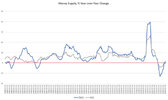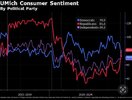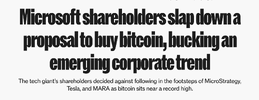President James A. Garfield
For the second time in two months, the Bank of Canada has lowered interest rates by 0.5% with a target policy rate now at 3.25%. On December 18, 2024, the Fed is expected to similarly lower interest rates again.
For the heavily indebted working class and corporations, lower rates cannot come soon enough.
The Fed Has Stuck Citizen Heads In A Vice
After 35 years of blowing sequentially bigger debt-leveraged bubbles with sequentially lower interest rates and higher debt levels, the Fed has now maneuvered the country into an intolerable bind.
1. On One Side: Higher Cost of Living Driven By Fed Monetary Debasement
The Fed is now loosening monetary policy (once again) however this time it is doing so into the teeth of high consumer goods price inflation. While the Fed’s opiated measure of inflation, the CPI-U, shows goods price inflation relatively stable at 2.7%, other more detailed cost of living measures are telling a different story.
The Truflation CPI index tracks 13 million prices on a daily basis and it is already showing, once again, a sharply increasing cost of living rate as the Fed loosens monetary policy / debases the currency through lowering interest rates.
Figure 1 – Truflation CPI Index; source: Truflation.com Dec. 11, 2024
The Fed claims that price inflation is due to shortages however goods price inflation operates on an 18+ month lag to monetary debasement and the Fed is once again loosening the money supply as can be seen below.
Figure 2 – Rate of Change YoY of Money Supply (TMS=True Money Supply: blue; M2 = M2 Money Supply: gray); source: Mises.org / Ryan McMaken
2. On The Other Side Of The Vice: Crushing Debt
As noted previously, current small bank consumer credit delinquency rates and current as well as projected default rates for leveraged corporate borrowers is pointing toward what may be a disruptive credit market event. This should not be a surprise as the Fed recently steered interest rates to 0% for the better part of a decade followed by a snap rate rise to 5%.
While debt relief is needed, many have already seen an intolerable rise in their cost of living and are unable to go another round with the Fed.
Now Things Are About To Get Wild
A further issue with loosening monetary policy now is that national financial conditions are already very loose.
The Chicago Fed National Financial Conditions Index, where zero represents average financial conditions since 1971 and a negative value indicates loosening financial conditions, shows that market financial conditions are already very loose.
By further loosening at this point, the Fed is going to drive financial markets wild – until they inevitably crash back down again.
Figure 3 – Chicago Fed National Financial Conditions Index; source: Chicago Fed
The US Treasury bond market seems to sense something is amiss with yields generally rising since the Fed’s September 18, 2024 0.5% rate cut.
This makes sense if Treasury traders are sensing increasing goods price inflation (degraded currency buying power) is coming and will put the bond market directly at loggerheads with the Fed.
Figure 4 – US 2, 10 and 30 Year Treasury Yields; source: tradingview.com
Next Comes QE – And A Currency Crisis
This is all heading toward the Fed once again implementing Quantitative Easing (QE) printing currency and buying bonds and financial assets to fake financial market prices – and ultimately a currency crisis where grossly inflated financial capital pursues real assets triggering rapid onset of extraordinary goods price inflation.
Did you know there is a Chinese equivalent for all the top tech companies in the United States?
They do not import our technologies like most countries. They ban them. Then, they copy and recreate them with new names.
I love this clip from Silicon Valley, an old HBO show that poked fun at this. It was spot-on about a lot of things.
For purposes of this discussion, I ask you to forget any of your feelings on intellectual property theft and the general geopolitical concerns about Chinese technology. This has nothing to do with any of that.
This post is about making money on an emerging area of the international equities market.
There is a brand new bull market shaping up over in China. This is one of the largest and fastest-growing economies in the world. It is also home to some of the most innovative technology companies outside of America.
Interestingly enough, many of these Chinese tech leaders are also massive. They dominate the Chinese stock market, much like the Magnificent Seven dominates in the US.
In building exposure to China, my strategy has been to start with large anchor positions in these technology behemoths.
I did the same thing with the mega-cap growth stocks in the US two years ago. They were the early leaders. I don’t think China will be any different.
Allow me to introduce the FANGhai Composite Custom Index:

This is the same pattern we’ve been buying this entire cycle. It is a textbook rounding bottom, and it is just now completing – indicating a new uptrend is underway.
I have marked up the three phases of a market cycle in both the price and momentum chart.
You can see the downward-sloping 200-day moving average and bearish momentum regime on the left-hand side of the chart.
Then, the transition to a trendless state, characterized by a sideways moving average and neutral momentum regime.
And now, over the past few quarters, we can see a new uptrend forming. This is indicated by the rising moving average and bullish momentum regime.
A bullish momentum regime means RSI-14 is getting overbought on rally phases… and not getting oversold on corrective phases. This has been the case since April.
We should probably mention the historic momentum thrusts from September/October as well. They suggest the initiation of a new uptrend.
And how about the sentiment around China!? It’s exactly what you want to see at a major market bottom.
Long story short, the chart of this custom index tells us China’s largest and most dominant growth companies are completing trend reversals.
We want to own a lot of them. So, we’ll be doing deep dives into each one individually over the coming days and weeks.
For now, here’s a little on each of the seven components:
Alibaba Group (BABA): Leading global e-commerce and cloud services giant, often compared to Amazon. This is truly the “Amazon of China,” with a heavy footprint in e-commerce and digital services.
Pinduoduo (PDD): E-commerce platform rapidly growing through its group-buying model. Think of this one as the discount online marketplace of China, focusing on social commerce and price-conscious consumers.
Baidu (BIDU): China’s top search engine and a leader in AI development, particularly autonomous driving and voice recognition. Think of this one as the “Google of China,” with a strong emphasis on AI and search.
BYD Co. Ltd. (BYDDF): A major manufacturer of electric vehicles (EVs) and batteries. This is the “Tesla of China.” It even trades more like Tesla than it does Chinese Stocks.
Xiaomi Corp (XIACY): A leading Chinese electronics manufacturer known for its smartphones, smart home devices, and plans for electric vehicles (EVs). This one is emerging as the “Apple of China,” or at least one of them. Their phones & electronics have a huge presence in Asia & Latin America.
JD.com (JD): Another e-commerce retailer in China. JD is actually the largest by sales and has become a leader in logistics with a robust ecosystem of physical and digital stores. Think of this one as a Chinese hybrid of Walmart and Amazon. JD’s subsidiary, JD Health, is the largest online healthcare platform in China.
Tencent (TCEHY): A global leader in social media (WeChat), gaming (Riot Games), and digital payments and services. This is basically the “Facebook of China.”
I am building positions in these industry leaders, and they will be my anchor investments for the new China bull market theme.
However, I like some a lot more than others.
Nike Signs Michael Saylor (Microstrategy) to a Bitcoin ‘Just Do It’ Campaign
Be Like Mike (Mike Saylor)

Howard Lindzon
December 10, 2024
https://www.facebook.com/sharer/sha…icrostrategy-to-a-bitcoin-just-do-it-campaign
https://twitter.com/intent/tweet?te…bitcoin-just-do-it-campaign&via=howardlindzon
https://www.threads.net/intent/post…icrostrategy-to-a-bitcoin-just-do-it-campaign
https://www.linkedin.com/sharing/sh…icrostrategy-to-a-bitcoin-just-do-it-campaign
Be like Mike…
The new be like Mike is Michael Saylor of Microstrategy.
He is enjoying his moment.
If your business is buying Bitcoin and borrowing to buy more Bitcoin you have a lot of free time to do other stuff…like be on Barstool Sports telling Dave’s degenerates to buy Bitcoin while making bad sports analogies:
If you do not know Michael Saylor or who/what Microstrategy is or does here is Michael Batnick’s great piece again titled ‘What Is Michael Saylor Doing…How Bitcoin’s Biggest Champion is Winning’. The gist:
MicroStrategy started buying Bitcoin on August 10, 2020. BTC is up 720% since then. MSTR is up 3,313% over the same time. Needless to say, no stock in the S&P 500 has come close to matching those returns. So how did he do it?
“Intelligent leverage” is what they’re calling it.
In the first nine months of the year, their diluted shares outstanding rose 13.2%. Their total Bitcoin holdings rose 33.3% over the same time. Here’s how they described their strategy on their most recent earnings call:
“Our objective continues to be to accumulate Bitcoin holdings at a faster rate than we issue shares, and we have demonstrated a solid track record of doing so. To assess our performance in achieving this strategic objective, we introduced a new key performance indicator last quarter, which we refer to as BTC Yield. To reiterate again, we define BTC Yield as a period-to-period percentage change in the ratio of our total bitcoin holdings to our assumed diluted shares outstanding.”
That’s it. That’s the whole game. And right now, they’re winning 28-3 (I kid).
The stock is up 3,313% since they started buying bitcoin, but the market cap is up 7,820% over the same time. Wait, what? How? Isn’t diluting existing shareholders bad? Yes, almost always. Unless you’re using the fresh capital as leverage to buy an asset that has explosive growth. Here’s Saylor describing it:
“The more capital that we gather, the more powerful we become and the more we enrich our own shareholders. This is — it’s totally counterintuitive because everybody else in the world thinks if you sell equity, you dilute the shareholders. That’s true if you don’t have a use of proceeds that grows faster and yields more than the S&P 500 Index. The cost of capital is the S&P 500.”
MicroStrategy holds 331,200 Bitcoin with a current market value of ~$32 billion. The market cap is $94 billion. I’d say his game plan is working, and then some. The question is, what are the limits of this strategy? How long will it keep working? If the 264% growth in its market cap over the last three months continues, it will cross $1 trillion by the end of April. It would blow past where the largest stock is today (Nvidia) in July.
I guess anything’s possible, but this would be the craziest thing to ever happen in the history of financial markets.
Michael ponders…’What are the limits to the strategy?’
Here is the good and bad news to Micahel’s timely question…WE ARE ABOUT TO FIND OUT!
I have been making my calls and getting the calls…every company has to have a ‘Bitcoin Reserve’ and be like Mike strategy for their stock or even startup.
Credit to the early Bitcoin maximalists. I am good friends with a few.
There is Bitcoin envy though right now everywhere.
Back in October I shared on Stocktwits.com that I bought some Square (Now Block – $SQ) as more of a fintech ‘catch up play and baby Microstrategy:
Jack Dorsey the CEO has long been a Bitcoin maximalist. I just sold it the other day but in writing this post I have Microstrategy/Bitcoin envy again myself and may just buy some back as ‘baby Microstrategy shmuck insurance’.
I do own some Bitcoin, Rachel owns Bitcoin, my dog Lindzee probably owns Bitcoin and I am not sure who is left to buy Bitcoin, it’s just a matter of how much Bitcoin now gets bought because in a world of millions of billionaires, the only cool thing left is cornering the market.
Please be careful at the moment as the copycat model feels too hot and the math seems too easy.
Three Things I Think I Think – Strategic Reserves and Stuff
Sorry for the brief hiatus. I’ve had my head down working on my new book which is due in a few weeks here. I am having a blast writing it which is either indicative of my own delusions or something readers will really enjoy. Perhaps both. Anyhow, here are some things I am thinking about in addition to my book:
1) The Strategic Bitcoin Reserve. There’s increasing chatter about the US government starting a “strategic Bitcoin reserve”. I will be blunt about this – I have no idea why any government would want to do this. When the world was on a true gold standard it made sense to have reserves of gold because you needed gold to support the money supply. Today’s system is not a fixed money supply system. The value of the money we create is only as good as the goods and services denominated in that currency. It has nothing to do with gold or any fixed monetary unit, not even central bank “reserves”! So governments don’t need to hold reserves of Bitcoin or gold. In fact, the government doesn’t need to save money at all because it has a printing press.
The government needs us to produce real resources, but it doesn’t need to save money to be able to spend money. And that’s my major problem with the idea of a strategic Bitcoin reserve. In theory, this reserve would protect us from potential currency devaluation, right? But you’re telling me that we should print fiat money to buy an asset that protects us from printing fiat money? That doesn’t even make sense. If we’re going to print money to protect the value of our currency then we should be strategically investing that money in endeavors that create real resources or are accretive to economic value in the future.
At times in the past I’ve expressed my interest in some sort of a strategic investment fund that would harness the printing press to create more venture capital style funding for entities that needed it. It’s controversial to have the government do that, but if we’re going to print money to protect the currency you want to do that in the process of innovation and mobilizing real resources, not buying rocks or digital rocks. Printing money to buy rocks makes no sense and should do nothing but create inflation and make the problem worse!
Anyhow, Bloomberg had a good editorial opinion on this. They call the idea a “scam” which is probably going a little too far, but I think it’s fair to say this is a very poor use of taxpayer dollars.
2) Exploding US Market Capitalization
I was updating a section of my new book and I was mind blown by this statistic – the USA is now 63.5% of all global market cap. Up from 60.5% at the start of the year. In fact, it should rebalance to almost 65% at some point in the next quarter since that’s where the FTSE All World Index now sits.
The US stock market has been the only game in town for years now. The last 3 years have been especially bad as global developed stocks have generated just 2.7% per year while US stocks have generated over 10.5%. If your benchmark is global financial assets well, the last 3 years have been pretty dreadful unless you’ve been massively overweight US.
The most amazing part of this data is that the next closest market is Japan at just 5.6%. No other country comes remotely close to competing with the US dominance in global market valuations. Sure, China is closer on a full cap basis, but over 55% of Chinese stocks aren’t investable so even China is small in comparison. And their market has been decimated in the last few years.
It’s wild stuff. The rah rah USA part of me is super happy about this. But the asset allocator in me looks at this and wonders “how is this not a huge potential risk for US investors”? It comes down to the old debate about momentum versus mean reversion. If you believe in mean reversion you think this trend has to reverse at some point. But if you’re the momentum investor you think the USA will just eat the world. Personally, I don’t think you have to pick one or the other and that’s kind of the beauty of holding the whole world allocation. But man it’s hard to look at those international allocations and not wonder if they’ll ever play catch up….
I was laughing at the online discourse last week after the U Michigan sentiment survey was updated and the figures predictably flipped after the election. Republicans are now optimistic and Democrats are now pessimistic. The data set that barely budged was Independents. And yet the discourse online was all about how the data is useless because the two extreme sides are so volatile. But what about those Independents? Why do they always get ignored?
It’s an interesting piece of the data because when you view the economy thru the lens of Independents things look just okay. Not bad, not great. Which I would say is pretty accurate. And my guess is that most people in this country, despite being forced to pick a side in most battles, probably overlap in numerous ways that make them more Independent than they are categorized as. But instead of the Independents dominating the narratives we tend to hear mostly from the two polar opposite parties.
Anyhow, nothing surprising there, but it drives me nuts how people don’t spend more time thinking about the many overlaps we have here and instead focus on the extremist ways in which our politics disagree. It seems to be getting worse as I get older. We’re all getting increasingly trapped in our little political silos and ignoring everyone else. The naively hopeful optimist in me still thinks it will get better before it gets worse, but I’m not so sure anymore….mean reversion isn’t a very popular thing these days, in markets or politics.
The Hawk Tuah Memecoin Rug Pull Is The Apotheosis Of Bag Culture | Defector
I can’t ease you into this one, so: Haliey Welch, colloquially known as the “Hawk Tuah girl,” launched a bespoke cryptocurrency token called HAWK last Wednesday, the same day she told Fortune it was “not just a cash grab” and her manager cut off a question in the same interview about its…
![]()
defector.com
LOL anyone that buys this shite deserves all they lose.
So the above chart is quite interesting: the candle chart = Log of SPX/money supply.
Outside of 1929, market is at a potential turning point.
I think however that we will replicate the 1929 experience because we are actually also (again for the second time in 100yrs) caught up in a Sovereign debt bubble.
We are seeing massive speculation. Off the charts currently. Who the f*ck buys some tart’s crypto coin. WTF. Which is just to say, stocks will continue into this melt-up far higher than anyone can believe.
jog on
duc
Source link
#December #DDD











